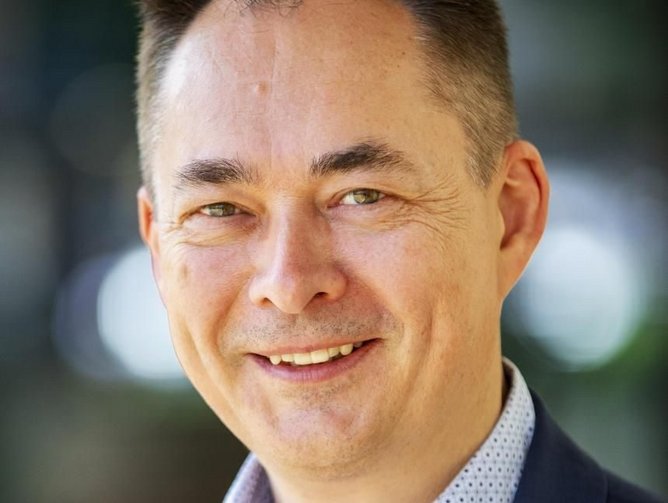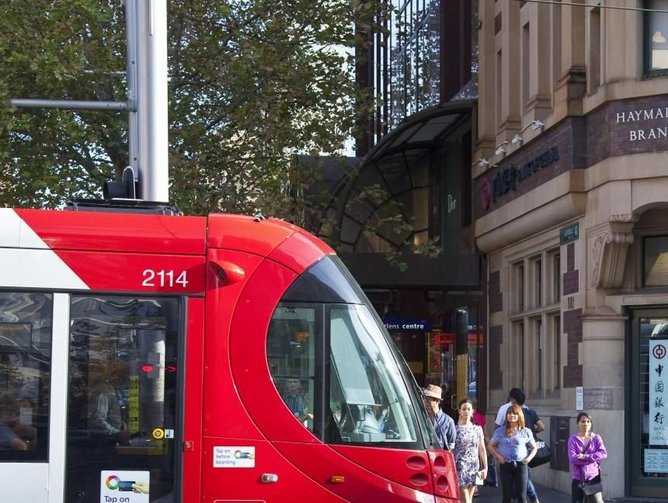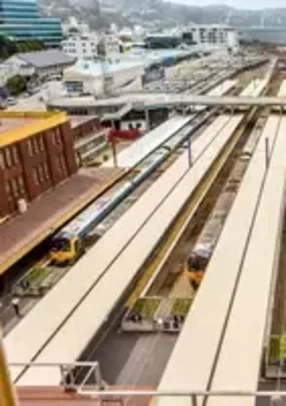When the French companies Veolia and Transdev merged in 2011, rebranding all operations as Transdev two years later, the new entity set about consolidating its position as a global transportation provider. Today, it has operations in more than 20 countries. It has been growing its presence in Australia and New Zealand since 2013, though in fact, Veolia has been present there since 1998. Today, it has 13 divisions in the region, providing bus, rail, tram, ferry and school transport services to Australia’s major cities from Perth in the west to Brisbane in the East.
In all it operates multiple modes of transport with New Mobility solutions deployments such as ARDi, the first automated on-demand shuttle, Transport on Demand services.
Personalised, Autonomous, Connected and Electric (P.A.C.E.)
Transdev is strongly advocating the MaaS concept across Australasia.
Innovations like this light up the eyes of Peter Orlowski, CIO of Transdev Australia since August 2019. He is also Chief Digital and Innovation Officer, and his vision is very much in line with that of Transdev’s Chairman Thierry Mallet, who announced recently: “We are building an ecosystem of partner companies to ensure the best service at the best cost,” tagging Transdev as The Mobility Company to reflect its more personalised, more autonomous, connected and sustainable approach. However, innovation should be built in an entrepreneurial and sustainable environment.
By its very nature, Transdev has grown as a collection of services differentiated by location, mode and history. “When you take over a contract, it comes with all the legacy. Don’t misunderstand me; all our operations are highly efficient, professional and customer-focused. Transdev recognises that transport is becoming predominantly data-driven. We are going through a huge transformation globally to embrace concepts like Mobility as a Service (MaaS), which relies on data platforms that allow you to integrate many providers.”
Customers, Orlowski says, expect to commute with ease and not have to worry about who is operating that part of the network, or how they are going to pay, because the payments are largely automated. Though this seamless experience is already happening in some places, ANZ is catching up quite rapidly, he has found, not least helped by the experience and knowledge that already exists within Transdev and its partner network.
Orlowski also observed that the past investments into IT were tactical coming from immediate operational need rather than strategic resulting with islands of excellence and of infrastructure where platforms need to be replaced or put in place to provide real-time data feeds from the company’s systems and integrating these with those of the public transport authorities (PTAs) that make up the client base. “Of course, the PTAs themselves differ in their level of IT maturity and capabilities but they do share our ultimate vision and the new tenders coming out reflect that. MaaS will become reality only if we all focus on data driven customer convenience.”
Communities of competence driving strategy
He has defined a strategy for his organisation with three main pillars. Sound governance around IT, security, project and product management; capabilities around people and toolsets; and foundations. Out of that strategy, his team identifies 60 major transformation initiatives.
Reviewing existing platforms, Orlowski found much off-the-shelf technology, noting that “we only have a couple of core systems developed within the Transnet group.” Though this meant that many of the companies were using common platforms, these have been adopted at different times using different consultancies, making it difficult to transfer staff; even though they may have been using familiar platforms they may not understand later iterations. To counteract this, he has set up ‘communities of competence’ with a core team of experts linked to key users in the various businesses and modes. The communities can then look at standardising processes and integrating these centrally. “It’s about getting professionals under one roof to set a vision and grow trust within the business to drive that vision forward. I have found the community approach works better than centres of excellence locked in an office with very little connection with the field.”
The primary tool these communities use is Hastus for network optimisation and improvement. Orlowski states that “if we can optimise the network the customers will be happy because the buses will not run empty, passengers will be happy because they will be picked up by a more frequent service, and the drivers will be happy because they will have less congested routes to negotiate.”
This phase is more about competency and vision than about IT, but it’s vital to the digital journey to new levels of automation. “Transdev has two main focuses - operating and maintaining its assets - and we have to be master of both,” says Orlowski. “People in the IT organisation and in the field can learn from each other. You can only do so much digitally – I am a big proponent of getting IT people out of the office if they are trying to create solutions just so they can understand the real-world problem.”
Strategic technology partnerships
If that seems self-deprecatory coming from a CIO think again. Data is the driver for the new vision, and while Orlowski is keen to develop as much internal expertise as possible, his team are working with partners to tap into the newest solutions. “We are always better together. For example, in the enterprise asset management space we have chosen Infor as our strategic partner. Infor’s global presence and experience in working with a broad spectrum of fleet, equipment or machinery asset companies is proven and their position as a Leader in Gartner’s magic quadrant further enhances our confidence.
“Infor EAM is also used by our global HQ in France and this partnership continues to help us optimise our asset management processes at Transdev. Infor’s ability to align with our requirements and offer a robust cloud and mobile-first asset management solution is something that is exciting for us and our data-driven approach. We’re able to find new innovative ways to capture operational data and augment it with data we collect from assets. That data turns into information; that information into actionable insights that is accessible across management dashboards. We can leverage data science to predict future scenarios, prevent unexpected downtime and plan ahead to deliver in line with our expected service levels.”
Applying that paradigm across all functions and modes will enable and enhance the vision of MaaS, on-demand transport and the eventual introduction of autonomous vehicles (AVs) to all modes resulting in more convenience and choice for clients.
The IT team at Orlowski’s disposal is not huge at some 40 people serving a large dispersed user base, but by involving external partners that capacity is multiplied. A robust telecoms infrastructure is vital to connect the communities together. “Thus far, Telstra has been a great partner, taking over 90% of the data traffic involved,” explains Orlowski. “However, it’s an aggressively competitive telecom environment and Transdev is open to any innovation such as 5G roll outs, LiFi or alike inviting companies to be creative.”
Towards a cloud-based future
Most of the operations cover the regional areas around the principal cities, he adds. They will always look for what works best in any particular location whether it’s telecoms or another technology. “To realise MaaS aspirations our assets all have to be telco enabled as we have IoT devices that collect a lot of data as they move about. We need that capability and also the ability to be able to plug into the different devices like people counters, door sensors, TV cameras, audio sensors to provide real-time data feeds so that people can, for example, plan their route using Google.”
The ability to optimise routes, pay for tickets by card or phone and all the conveniences that travellers now look for all comes from IoT. Close cooperation with Orion Network, our partner for IoT innovation, digital two-way radio coverage and data analytics is fundamental in our journey towards digitisation. Moving from traditional two-way radios to modern digital communication supported by operational platform to the latest Motorola digital communication supported by operational platform and analytics Orion has enhanced its digital capabilities. Working together on leading edge technology projects allow us to achieve benefits from data, for example ensuring better asset health via predictive analytical models.
Transdev is thus a data-rich environment in both ‘static’ data that can be interrogated and ‘streaming’ data well supported by cloud that can be analysed on the go. “Transforming IT infrastructure is a key foundational prerequisite for digital transformation. The legacy technology is not geared up to help me solve that equation. Now I am at the start of the journey. Many of our vendors are already in the cloud so they can add real value through their services. We are connecting our infrastructure to the cloud in a way that allows us to work seamlessly with our on-premise platforms and by the end of this year we will be all hooked up.” There are restrictions to consider. Some states in Australia legislate that data should be resident and processed within the state.
Clearly it will take time and phased investment to realise Thierry Mallet’s ‘mobility of tomorrow’ across the multi-modal and geographically dispersed networks of Australia and New Zealand, Orlowski concludes. But he is in no doubt that his team has a central responsibility to deliver that vision.
As a footnote, it’s interesting to note Orlowski’s reaction to the coronavirus outbreak just beginning to affect life in Sydney. Yes, it will disrupt things, but it will break many old patterns. “Working from home, having to use collaboration technology and finding smart ways to overcome the restrictions and challenges will be the new order, but after the crisis has passed, you wouldn’t simply revert to the status quo ante bellum. Ideally the crisis will stimulate new efficiencies and accelerate innovation in every sector.”





